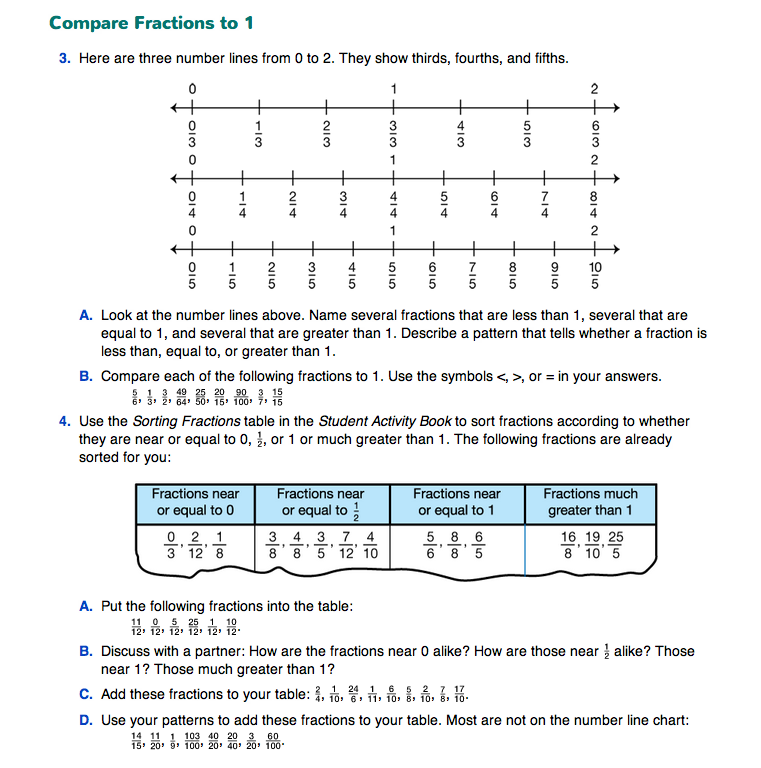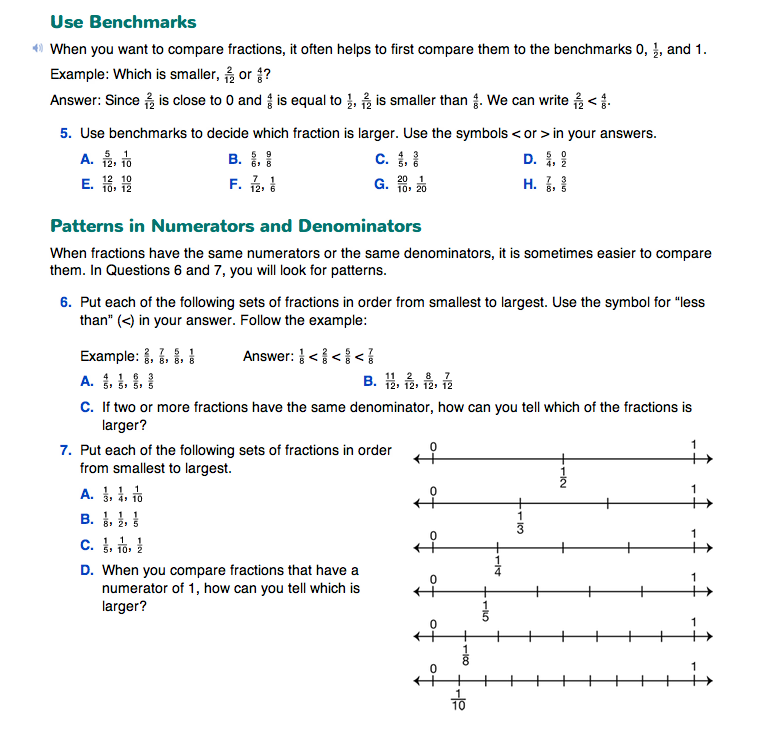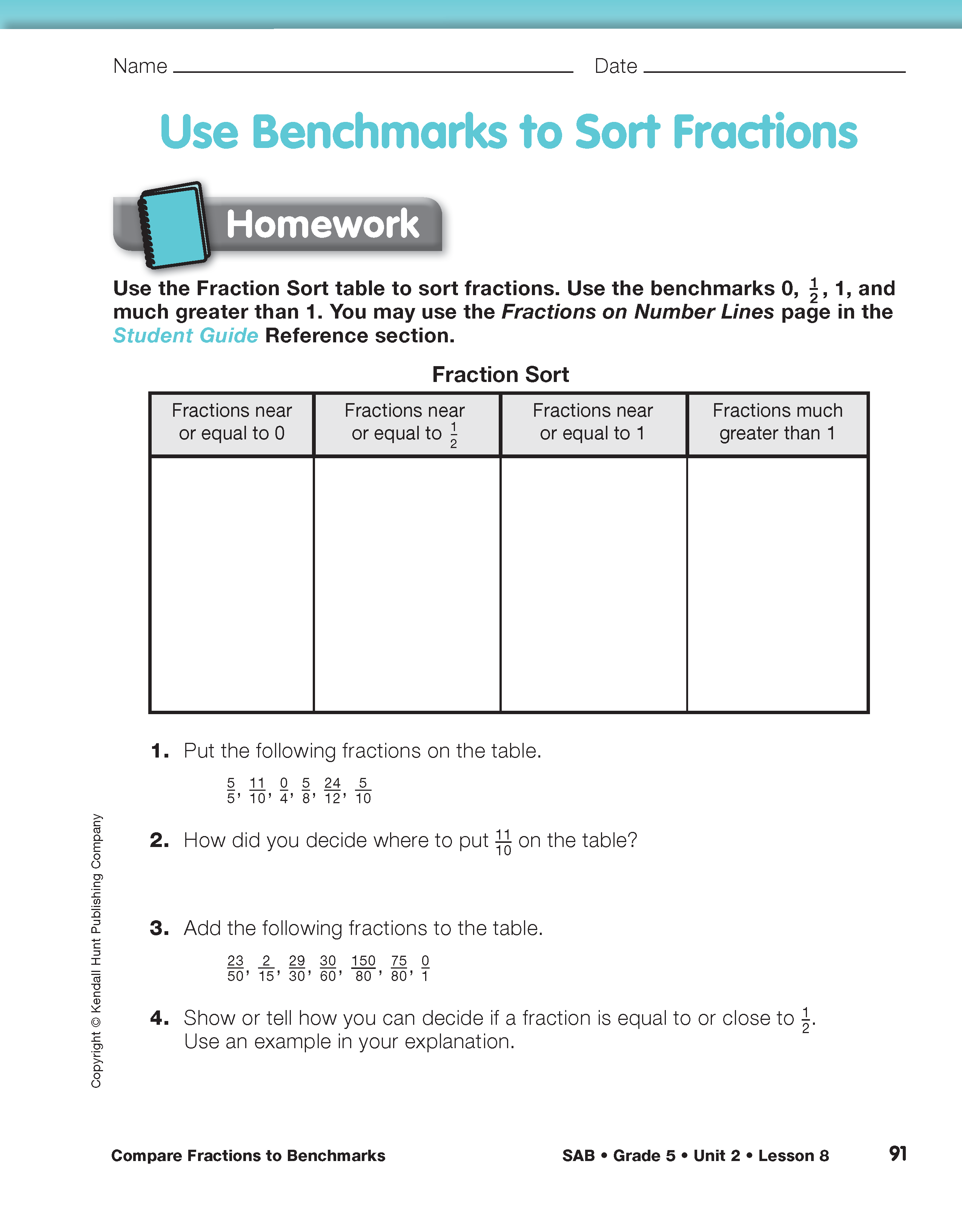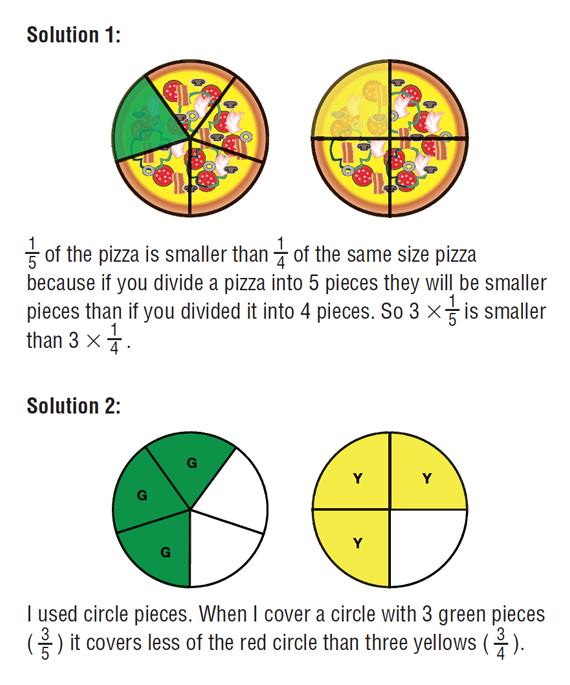Compare Fractions to Benchmarks
Est. Class Sessions: 2–3Developing the Lesson
Part 1. Use Benchmarks to Compare Fractions
Review Fractions on a Number Line. Begin this lesson by posing the following problem.
Ask students to discuss this with a partner:
After partners discuss this, ask several students to share their strategies with the class. Figure 1 shows two possible solution strategies.
Display the Fractions on Number Lines Chart page from the Student Guide Reference section. Explain that number lines can also be used to compare fractions. Fractions that are closer to zero on the number line are smaller.
Ask:
Direct students to the Compare Fractions to Benchmarks pages in the Student Guide. The opening paragraphs show students how to use number lines to compare fractions and how to write number sentences comparing fractions using the less than (<) and greater than (>) signs. Question 1 provides practice using the number lines to compare fractions.
Compare Fractions to 1/2. In Question 2 of the Compare Fractions to Benchmarks pages in the Student Guide, students are directed to use 1/2 as a benchmark to compare fractions. Ask students to work in pairs and use the number lines on the chart to complete Question 2A. Sketch a three-column chart on a display with the headings: “< 1/2 ”, “= 1/2”, and “ > 1/2 ”. Ask several volunteers to put one fraction in each column using their answers to Question 2A.
Then discuss the second part of the question using these or similar prompts:
Ask several students to share their explanations. Figure 2 shows one possible explanation using a drawing and one using a number line.
Students use their patterns to complete Question 2B. As students work, ask them how they decided whether the fractions were more or less than 1/2.
Compare Fractions to 0, 1/2, and 1. Use Question 3 to lead a similar discussion. Students identify, describe, and use patterns to compare fractions to one.
Question 4 asks students to sort fractions into a four-column data table on the Sorting Fractions page in the Student Activity Book. Encourage students to use the number lines to help them, as needed. After they have added the fractions in Question 4A to the table, students can compare their tables with those of their partners and can discuss any differences.
In Question 4B, students describe the similarities of fractions that are close to each benchmark. They discuss these questions in pairs or small groups. Then they share their ideas with the whole class. Their responses may include:
- Fractions equal to zero have zero for a numerator.
- Fractions near zero have small numerators but much larger denominators.
- Fractions near 1/2 have numerators that are about half of their denominators.
- Fractions equal to 1/2 have numerators that are exactly half of their denominators. The denominators are twice the numerators.
- Fractions equal to 1 have the same numerator and denominator.
- Fractions close to 1 have numerators that are almost the same as their denominators.
- Fractions much greater than one have numerators that are much larger than their denominators.
Questions 4C–4D ask students to add fractions to their tables. After providing time to complete each of these questions, allow students to share their answers and strategies.
For example, ask:
Question 5 asks students to use the benchmarks of 0, 1/2, and 1 to compare fractions. As students work, ask them which benchmarks they used and how they helped them decided which fraction was larger. Encourage them to refer back to the number lines as necessary.
For example, ask:
Assign the Use Benchmarks to Sort Fractions Homework in the Student Activity Book.



















